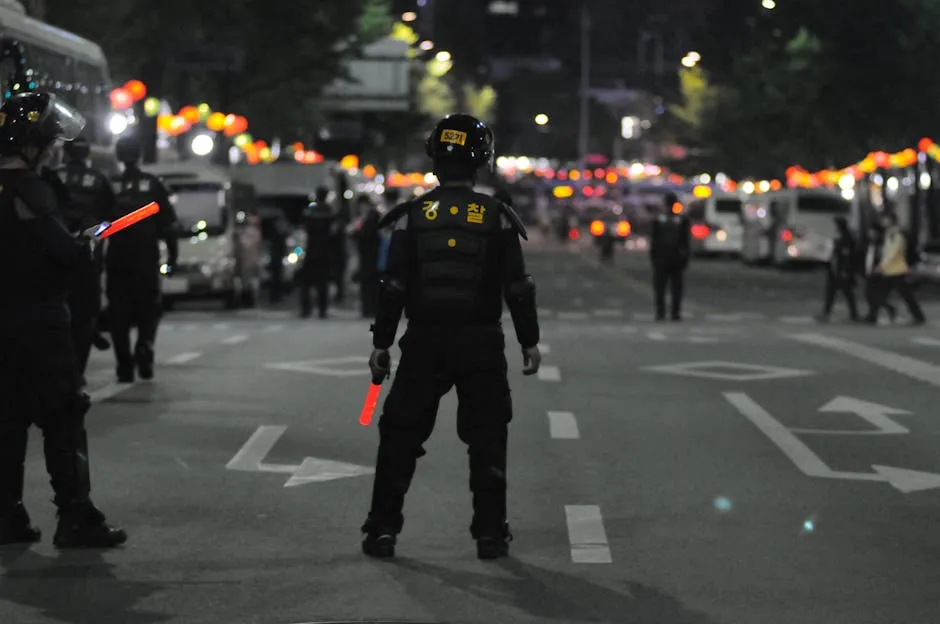Introduction
Welcome to Redding, California! Nestled in the scenic northern part of the state, Redding is a city known for its breathtaking landscapes and outdoor adventures. Whether you’re hiking in the nearby mountains or enjoying the beauty of the Sacramento River, Redding has something for everyone. However, like any community, Redding faces its share of challenges, particularly when it comes to crime.
Understanding crime statistics in Redding is vital for current residents and those considering a move. Crime rates can impact property values, community programs, and personal safety, making awareness crucial. This is where crime statistics come into play. They provide an essential snapshot of safety and crime trends that can help individuals make informed decisions and contribute to community well-being.
Our data sources include the FBI’s Uniform Crime Reporting Program and local law enforcement agencies. These organizations compile and analyze crime data, enabling us to grasp the nuances and patterns of crime in Redding. By understanding these trends, residents can actively engage in community safety initiatives and advocate for improvements.
In this section, we will examine Redding’s crime statistics, offering insights into the city’s safety landscape. We will discuss the overall crime rates, the types of crimes prevalent in the area, and how Redding compares to national averages. With this information, we aim to equip our readers with the knowledge they need to navigate Redding’s unique environment confidently.

Understanding Crime in Redding, CA
Overview of Redding’s Crime Landscape
When it comes to safety, perceptions can vary widely. Many residents feel a sense of security in their neighborhoods, while others express concerns about certain areas. Redding’s crime landscape is shaped by various factors, including local law enforcement’s effectiveness and community engagement.
Redding’s police department plays a pivotal role in maintaining safety. They are often praised for their visibility and responsiveness, but there is always room for improvement. Community feedback suggests that while many residents appreciate the efforts of law enforcement, some feel that response times could be quicker.
In recent years, Redding has seen a mix of crime trends. Some areas are experiencing increases in property crimes, while others report decreases in violent offenses. Understanding the city’s crime landscape requires looking beyond just numbers; it involves considering community sentiment and the role of local policing.
In the following sections, we will delve into the specifics of Redding’s crime statistics, providing a comprehensive overview of both violent and property crimes. By doing so, we can better understand how these factors contribute to the overall safety and well-being of the community.
Key Crime Statistics
Redding, California, presents a unique crime landscape that residents should understand. In 2022, the overall crime rate stood at 36 per 1,000 residents. This figure includes both violent and property crimes, giving us a comprehensive view of safety in the area.
When we break it down further, the violent crime rate hits approximately 6.25 per 1,000 residents. Comparatively, this is notably higher than the state average of 4.99 per 1,000 and the national average of 4.0 per 1,000, indicating a pressing concern for local safety.
On the property crime front, Redding’s rate is a staggering 30.01 per 1,000 residents. This too surpasses California’s average of 23.43, revealing a significant challenge for the community. These statistics highlight that Redding has a higher overall crime rate than 91% of California communities.
Visual aids, such as graphs and tables, can enhance understanding. For instance, a table comparing violent and property crime rates between Redding, California, and national averages can provide clarity.
| Crime Type | Redding Rate (per 1,000) | California Average | National Average |
|---|---|---|---|
| Violent Crime | 6.25 | 4.99 | 4.0 |
| Property Crime | 30.01 | 23.43 | 22.5 |
These numbers serve as a stark reminder of the importance of community engagement in safety initiatives. Understanding these statistics is essential for everyone living in or moving to Redding, as they depict the realities of crime in this vibrant city. For those interested in a broader context, exploring fremont crime statistics can provide additional insights into crime trends.

Detailed Crime Breakdown
Violent Crimes
Definition and Types of Violent Crimes
Violent crimes are serious offenses that involve force or the threat of force. They encompass several categories, including murder, assault, robbery, and rape.
1. Murder: The unlawful killing of another person.
2. Assault: Intentional infliction of bodily harm or the threat of harm.
3. Robbery: Taking property from a person using force or intimidation.
4. Rape: Non-consensual sexual intercourse or other sexual acts.
These definitions help clarify the nature of violent crimes in Redding. Understanding these terms is vital for grasping the context of local crime statistics and trends.

Statistics and Trends
Redding’s violent crime rate sits at 6.25 per 1,000 residents. To put this into perspective, California’s average is 4.99, and the national average is 4.0. This means Redding’s residents face a heightened risk of encountering violent crime compared to many other areas.
Over the past decade, Redding’s violent crime trends have ebbed and flowed. In the early 2010s, rates were significantly higher, with spikes in offenses such as aggravated assault and robbery. However, recent years have shown some decline in certain categories, although the overall rate remains concerning.
A historical perspective reveals that in 2010, violent crime rates were substantially higher, with figures reaching nearly 867 per 100,000 residents. This indicates a trend of gradual improvement, albeit with persistent challenges.
Residents should be aware of these trends as they navigate their daily lives. Community awareness and safety measures can play a crucial role in addressing these issues.
In summary, Redding’s violent crime statistics present a mixed picture. While there have been improvements, the rates remain higher than state and national averages, underscoring the need for ongoing community vigilance and proactive engagement in safety initiatives.
Community Impact
Violent crime casts a long shadow over the Redding community. It affects how residents perceive their safety and overall quality of life. Many locals, while enjoying the city’s natural beauty, can’t shake the feeling of unease. One resident, Sarah, shared her thoughts: “I love living here, but I can’t help but look over my shoulder sometimes. It’s a weird mix of beautiful scenery and lurking anxiety.”
The impact of violent crime reaches beyond just the statistics. It seeps into everyday life. Families may hesitate to venture out after dark, and businesses might struggle to attract customers due to safety concerns. Local shop owner Gary lamented, “I’ve noticed fewer people wandering downtown. They’re worried about crime, and that hits my bottom line.”
Community events that once thrived now face challenges. Attendance at local festivals has dipped. People are hesitant to gather in large crowds. Jane, a long-time resident, remarked, “We used to have block parties every summer. Nowadays, people prefer to stay home. It’s sad because we used to feel so connected.”
Law enforcement plays a crucial role in shaping community perceptions. While many residents appreciate the police’s efforts, there are mixed feelings about their effectiveness. Some residents feel reassured by a visible police presence. Others, like Tom, voiced frustrations, stating, “I called 911 once, and it took forever for them to arrive. It makes you question how safe we really are.”
The psychological toll of violent crime is significant. Anxiety levels rise, and trust in the community may wane. Many residents express a desire for more proactive measures to foster a sense of security. Community meetings are becoming more common, where locals gather to discuss safety strategies.
Statistics reveal that violent crime rates in Redding are noticeably higher than state and national averages. However, these numbers don’t capture the stories behind them. Each statistic represents a person, a family, or a business impacted.
In an attempt to combat these issues, community groups are emerging. They promote safety initiatives and encourage neighborhood watch programs. This grassroots effort aims to create a united front against crime. The sentiment is clear: residents want to reclaim their sense of safety and community spirit.
The effects of violent crime are deeply felt in Redding. Safety concerns alter the way people live their daily lives, and the community is actively seeking solutions. As residents rally together, they hope to build a safer, more vibrant Redding for everyone.

Crime Comparison
Redding vs. Other Cities
Statewide Comparison
Let’s put Redding’s crime rates under the magnifying glass and see how it stacks up against some of California’s most notable cities. Redding has a reputation for being a bit rougher around the edges compared to places like San Francisco and Stockton.
In Redding, the violent crime rate is approximately 6.25 per 1,000 residents, which significantly overshadows the California average of 4.99. For context, San Francisco, often seen as a bustling metropolis, has a higher rate of 6.9 violent crimes per 1,000 residents, but it’s essential to note that Redding’s overall crime rate is 36 per 1,000 residents, landing it in the upper echelons of crime rates across the Golden State.
Stockton, infamous for its crime issues, has a staggering violent crime rate of 11.7 per 1,000 residents. This places Redding in an interesting position—better than Stockton but worse than many suburban areas. Comparisons are tricky, as various factors influence these statistics, including population density and socioeconomic conditions. Nonetheless, Redding’s crime rates suggest a need for ongoing community engagement and safety initiatives.
Property crimes also paint a concerning picture for Redding. The property crime rate is a hefty 30.01 per 1,000 residents, significantly higher than California’s average of 23.43. Cities like Los Angeles have a property crime rate closer to Redding’s, while others, like San Diego, manage to keep their numbers around 20. This indicates that Redding faces a unique set of challenges that residents should keep an eye on.

National Comparison
When we look beyond California, Redding’s crime statistics offer a stark contrast to national averages. The national violent crime rate sits at 4.0 per 1,000 residents, which means Redding’s rate of 6.25 puts it well above the average. This discrepancy highlights a significant issue, indicating that residents face a higher risk of violent crime than the average American.
On the property crime front, Redding’s property crime rate of 30.01 is also higher than the national average of 22.5. This means that, statistically, residents of Redding are more likely to encounter property-related crimes than those in many other cities across the U.S. This is particularly troubling, considering the chance of becoming a victim of property crime is 1 in 33—yikes!
In summary, Redding’s crime rates are a mixed bag. While it performs better than some cities like Stockton, it still falls short compared to more tranquil areas, both statewide and nationally. Understanding these comparisons can inform residents and potential movers about the safety climate they might encounter in Redding.
Neighborhood Overview
Redding is a city of diverse neighborhoods, each with its own unique charm and challenges. When it comes to crime rates, some areas shine brighter than others.
For instance, neighborhoods like Lema Ranch and Jones Valley North are generally considered safer. These areas boast lower crime rates and a strong sense of community, making them attractive for families and those looking for peace of mind. On the other hand, places like the Hawley/Twinview neighborhood have garnered attention for higher crime rates. Residents report feeling less secure, which can deter potential newcomers.
It’s essential to consider these neighborhood dynamics when evaluating Redding’s overall safety. The differences in crime rates can be significant, and understanding where the safer spots are can help residents make informed choices about where to live. Engaging with local community boards and forums can give you valuable insights into which neighborhoods suit your safety preferences.
While Redding has its challenges, many residents are dedicated to fostering safer communities. Neighborhood watch programs and community events can help build trust and improve safety. By staying informed and involved, residents can contribute to a more secure environment for everyone.

Community Programs and Safety Initiatives
Redding, CA, isn’t just a city with crime statistics; it’s a community that values safety and camaraderie. Numerous programs have emerged, focusing on crime prevention and promoting safety among residents. For instance, the Redding Neighborhood Watch program encourages locals to band together, keeping an eye out for one another. This grassroots initiative empowers residents to form bonds while tackling safety concerns head-on.
Additionally, the Redding Police Department runs various outreach programs. These initiatives include safety seminars, self-defense classes, and community engagement events. They aim to educate residents about crime prevention strategies and foster a collaborative spirit among locals. It’s a win-win: residents gain valuable knowledge and law enforcement builds trust with the community.
Involvement from residents is crucial. Many locals actively participate in these safety initiatives, attending meetings and volunteering for neighborhood patrols. This active participation not only enhances security but also strengthens community ties. Residents often report feeling more connected, knowing they can rely on one another and their local police force.
To enhance your personal safety, consider investing in a Home Security System with 1080P HD Camera. It provides peace of mind and allows you to monitor your property remotely, ensuring that you can keep an eye on your surroundings.

Future Outlook
Predictions and Trends
As we gaze into the crystal ball of Redding’s crime landscape, we can identify potential trends based on current data. With the overall crime rate at 36 per 1,000 residents, Redding faces challenges but also opportunities for improvement. Experts suggest that as socio-economic conditions change, crime rates could fluctuate accordingly.
For example, local economic development initiatives may lead to job creation, which often translates to lower crime rates. Conversely, if economic strains persist, we might see crime trends remain stable or even worsen. Increased community involvement can provide a buffer against these potential pitfalls. Engaging residents in crime prevention initiatives may further mitigate risks.
Additionally, national trends show a growing emphasis on mental health resources. Addressing mental health issues can lead to a decrease in certain crimes, particularly those related to substance abuse. If Redding adopts similar strategies, we could see a positive shift in crime statistics.
To enhance your well-being, consider reading The Body Keeps the Score: Brain, Mind, and Body in the Healing of Trauma. This book offers insight into understanding and addressing trauma, a key factor in community safety and personal resilience.

What Residents Can Do
Residents of Redding have a vital role in enhancing personal safety and community well-being. Here are actionable strategies for locals:
- Stay Informed: Regularly review local crime reports and statistics. Knowledge is power!
- Engage in Community Programs: Participate in neighborhood watch groups or safety seminars. This not only strengthens community bonds but also fosters vigilance.
- Utilize Reporting Mechanisms: If you witness suspicious activity, report it to local law enforcement. Timely reporting can make a significant difference.
- Practice Safety First: Always be aware of your surroundings. Simple precautions like locking doors and securing valuables can go a long way.
By fostering community vigilance and proactive reporting, residents can collectively work toward a safer Redding. And why not stay fit while you do it? A Fitness Tracker for Personal Safety and Health can help you monitor your physical activity while keeping your health in check!

Conclusion
In summary, understanding Redding, CA crime statistics is crucial for residents and those considering a move. The city faces significant challenges, with crime rates higher than national averages. However, by engaging in community programs and safety initiatives, residents can play an active role in enhancing their safety and well-being.
The importance of understanding crime statistics cannot be overstated. They serve as a guide, helping individuals make informed decisions and fostering a sense of security within the community. Encouraging residents to stay informed and involved will pave the way for a safer, more connected Redding. Together, we can build a thriving community where safety is a shared priority.
Please let us know what you think about our content by leaving a comment down below!
Thank you for reading till here 🙂
For those interested in understanding the broader context of crime in California, the divorce statistics in California can provide insights into social factors that might correlate with crime trends.
Lastly, if you’re curious about the psychological aspects of crime, you might enjoy The Psychology of Criminal Behavior by David R. Koss. It’s a fascinating read that delves into the minds behind the statistics!
All images from Pexels




